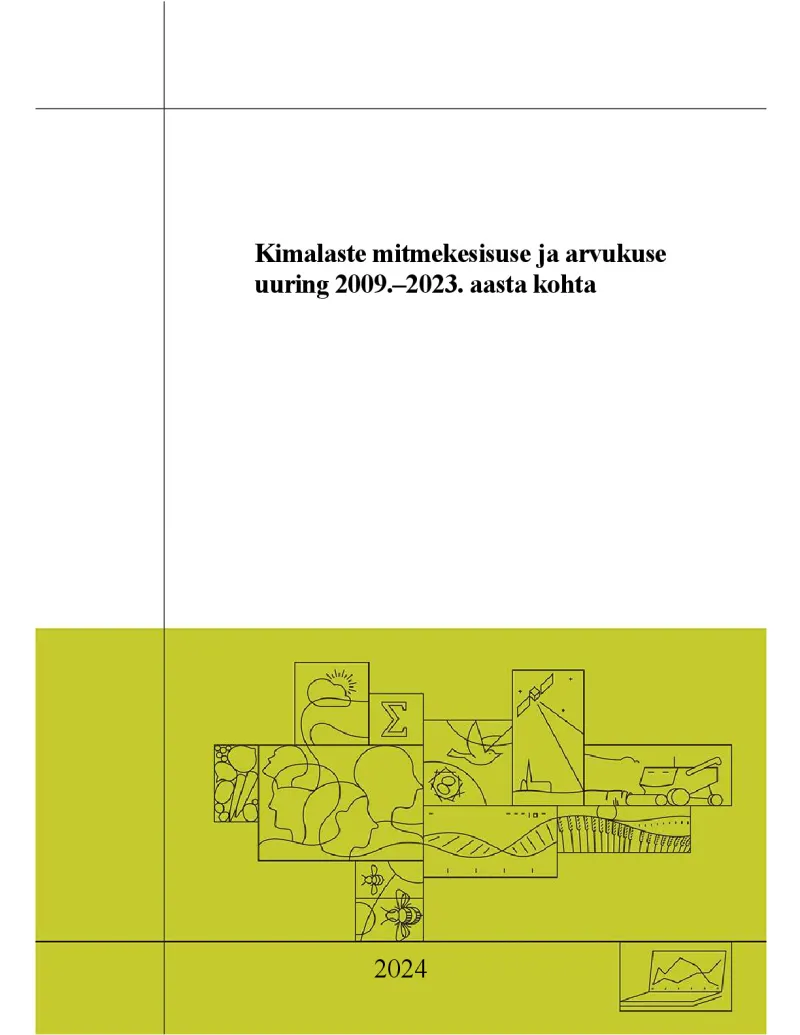Study on the diversity and abundance of bumblebees during 2009-2023
The study assesses how Estonian agricultural production has protected the habitat function of the land, as well as whether the Rural Development Programme's organic farming scheme increases biodiversity and whether the environmentally friendly management results in an increase in the diversity and abundance of bumblebees.
- Estonia
- 2014-2022
- Environmental impacts

The study of the abundance and species richness of bumblebees covers the period 2009-2023 and analyses specific Estonian Rural Development Programme (RDP) monitoring results for both regional aspects, as well as the contribution of RDP's main agri-environmental interventions to enhance and preserve biodiversity.
The primary evaluation topic is gathering data to assess the RDP's environmental impact. The purpose of this study is to evaluate the 2014-2020 RDP in terms of biodiversity and assess the fulfilment of the goals set for agri-environmental interventions, such as environmentally friendly management and organic production. As a comparison group, results from the areas receiving area-based support are analysed. The programme-specific monitoring regions are located in southern and central Estonia, representing both more homogeneous and more heterogeneous landscapes. The study contributes to assessing Focus Area 4A 'Restoring, preserving and enhancing biodiversity'.
The main methodological approach involves data collection from the field (e.g. bumblebee counting, defining food-source plants and assessing blossom abundance) and a control group approach. The main data sources are results from RDP-specific biodiversity monitoring studies and various detailed data from the agricultural information and registers board (acting as the Paying Agency and managing the Land Parcel Identification System and Integrated Administration and Control System). Other data sources include different reports from other studies and literature reviews.
By region, between 2009 and 2023, the average bumblebee figures per census track were, in almost all cases, higher in southern Estonia than in the monitoring areas in central Estonia. In southern Estonia there are more diverse landscapes, smaller farms and agricultural fields, more permanent grasslands, a higher proportion of areas under RDP organic support, more area under clovers and leguminous plants (except legumes), larger areas of ≥2 m vegetated area, higher average number of plant species visited by bumblebees and the density of flowers in the counting tracks. Therefore, this area offers more suitable habitats and food for bumblebees.
Despite this, the indicators for bumblebees have declined significantly in recent years in southern Estonia, reaching one of the lowest levels during the monitoring period of 2009-2023 in 2022-2023. The reason may lie in the natural dynamics of the bumblebee indicators. However, at the same time, some negative trends regarding biodiversity can also be observed in southern Estonia: grassland strips are narrower, pesticide use has increased, wheat yield has also increased (indicating intensification) and there are fewer perennial grasses.
Analysing results by CAP support type, the average indicators of bumblebees during the monitoring years of 2009-2019 showed a continuous trend per counting track, with the majority being lower in the land receiving no RDP area-based support (control group) compared to RDP organic farming and agri-environment measure environmentally friendly management (EFM). Between 2020 and 2023, the same trend continued in central Estonia, while in southern Estonia, all bumblebee indicators and flower density were the lowest in EFM areas (in some cases, already in 2019). One of the reasons why the indicators were mostly higher in the land under organic farming and EFM support might be the requirements of these measures, which indirectly favour bumblebees. In the counting tracks in the land without any RDP area-based support, the density of flowers was also often lower, i.e. they provided less food. The lowest bumblebee indicators over the years were found in central Estonia, specifically in the land under RDP area-based support. Consequently, there were the most unfavourable conditions for bumblebees, including the lowest flower density.
In central Estonia, the areas under RDP EFM support were the most favourable for bumblebees, which was probably largely due to the presence of grass strips in the field edges. The latter was the widest, less frequently mowed, with a high number of flowering plants and a high average number of plant species visited by bumblebees. In 2023, however, in the results from the central Estonian areas under RDP EFM support appeared a sharp drop in bumblebee indicators and flower density, which may be due to the disappearance of the requirement of the grassland strips in the EFM measure; in 2023, the monitored grassland strips in the field edges became narrower. Bumblebee indicators decreased in 2023, also in organic farming and control areas, and the share of narrower grassland strips in field edges increased in these categories.
Author(s)
Anu Tiitsaar, Eneli Viik (Maaelu Teadmuskeskus)